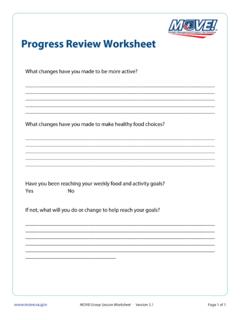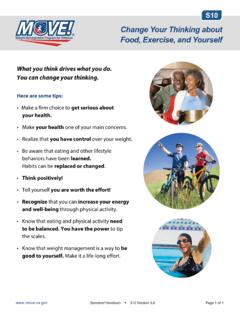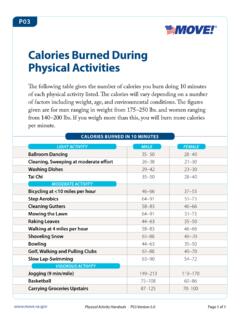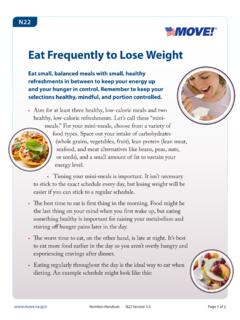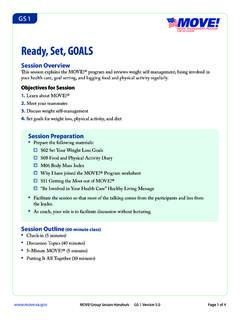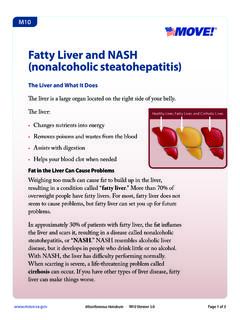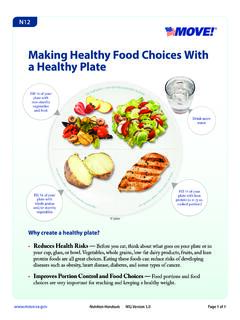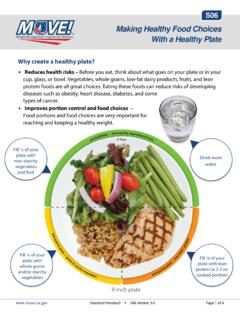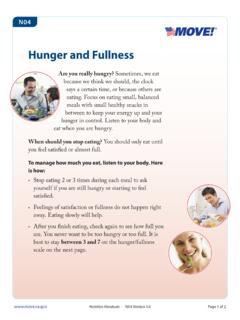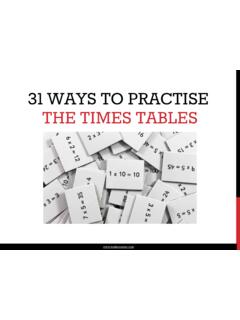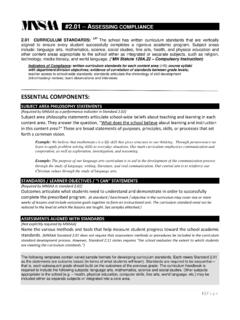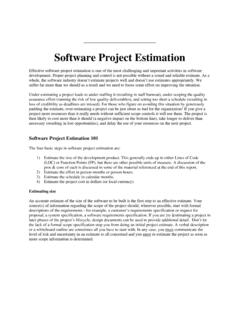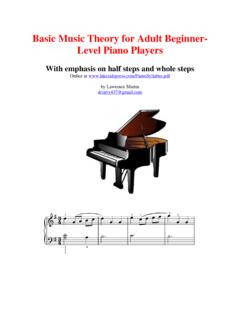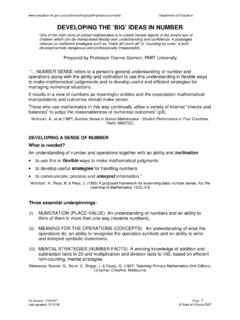Transcription of MOVE! Physical Activity Handout P32: Sample Strength ...
1 1 of 12 Physical Activity Handouts P32 Version Strength Activity Plan for BeginnersAbout Strength ExerciseTo do most of the Strength exercises in this plan, you will need to lift or push weights (or your own body weight), and gradually increase the amount of weight used. Dumbbells and hand/ankle weights sold in sporting goods stores as well as resistance tubing can be purchased. Get creative and use things in your home like milk or water jugs filled with sand or water, or socks filled with beans and tied shut at the ends. You can also use the special Strength -training equipment at a gym or fitness center.
2 There are so many ways to participate in Strength training!How Much, How Often Do Strength exercises for all of your major muscle groups at least twice a week, but no more than 3 times per week. Don t do Strength exercises of the same muscle group on any 2 days in a row. Depending on your condition, you might need to start out using 1 or 2 pounds of weight or no weight at all. Sometimes, the weight of your arms or legs alone is enough to get you started. Use a minimum weight the first week, and then gradually add weight. Starting out with weights that are too heavy can cause injuries.
3 Gradually add a challenging amount of weight to your Strength routine. If you don t challenge your muscles, you won t get much benefit. How to do Strength Exercises Do 8 12 repetitions in a row. Wait a minute, and then do another set of 8 12 repetitions of the same exercise. Take 3 seconds to lift or push a weight into place; hold the position for 1 second, and take another 3 seconds to lower the weight. Don t let the weight drop or let your arms or legs fall in an uncontrolled way. Lowering slowly is very important. It should feel somewhere between hard and very hard (15 17 on the Borg Scale) for you to lift or push the weight.
4 It should not feel very, very 2 of 12 Physical Activity Handouts P32 Version If you can t lift or push at least 8 times in a row, it s too heavy for you. Reduce the amount of weight. If you can lift more than 12 times in a row without much difficulty, then it s too light for you. Try increasing the amount of weight you are lifting. A little extra weight goes a long way! Stretch after Strength exercises, as this is when your muscles are warmed up. If you stretch before Strength exercises, be sure to warm up your muscles first by light walking and arm pumping.
5 Safety Don t hold your breath or strain during Strength exercises. Breathe out as you lift or push, and breathe in as you relax; this may not feel natural at first. counting out loud helps. If you have had your hip or knee joint replaced, check with your doctor to see if there are some lower body exercises that you should skip . Avoid jerking or thrusting weights into position or locking the joints in your arms and legs. This can cause injuries. Use smooth, steady movements. Muscle soreness lasting up to a few days and slight fatigue are normal after muscle-building exercises.
6 Exhaustion, sore joints, and unpleasant muscle pulling are not. These problems mean you are overdoing it. None of the exercises should cause pain. Progressing Gradually increasing the amount of weight you use is crucial for building Strength . When you are able to lift a weight more than 12 times, increase the amount of weight you use at your next session. Here is an example of how to progress gradually: - Start out with a weight that you can lift only 8 times. - Keep using that weight until you become strong enough to lift it 12 to 15 times. - Add more weight so that, again, you can lift it only 8 times.
7 - Use this weight until you can lift it 12 to 15 times, and then add more weight. Keep repeating. 3 of 12 Physical Activity Handouts P32 Version and Balance Exercises# of repetitions per set# of sets per session# of sessions per weekArm Raise8 1222 3 Chair Stand8 1222 3 Biceps Curl8 12 per side2 per side2 3 Plantar Flexion8 1222 3 Triceps Extension8 12 per side2 per side2 3 Alternative Dip8 1222 3 Knee Flexion8 12 per side2 per side2 3 Hip Flexion8 12 per side2 per side2 3 Shoulder Flexion8 1222 3 Knee Extension8 12 per side2 per side2 3 Hip Extension8 12 per side2 per side2 3 Side Leg Raise8 12 per side2 per side2 3
8 Sample SchedulePerform the following exercises, in order, at the recommended instructions for each exercise are provided at the end of this Handout . Some of this content is adapted from Exercise: A Guide from the National Institute on , SETS, AND SESSIONS PER 4 of 12 Physical Activity Handouts P32 Version RaiseStrengthens shoulder muscles. Sit in armless chair with your back supported by back of chair. Keep feet flat on floor even with your shoulders. Hold hand weights straight down at your sides, with palms facing inward. Raise both arms to side, shoulder height.
9 Hold the position for 1 second. Slowly lower arms to sides. Pause. Repeat 8 to 12 times. Rest, then do another set of 8 to 12 StandStrengthens muscles in abdomen and thighs. Your goal is to do this exercise without using your hands as you become stronger. Place pillows on the back of chair. Sit toward front of chair, knees bent, feet flat on floor. Lean back on pillows in half-reclining position. Keep your back and shoulders straight throughout exercise. Raise upper body forward until sitting upright, using hands as little as possible (or not at all, if you can).
10 Your back should no longer lean against pillows. Slowly stand up, using hands as little as possible. Slowly sit back down. Pause. Repeat 8 to 12 times. Rest, then do another set of 8 to 12 OF Strength Activity Handouts P32 Version 5 of 12 Biceps CurlStrengthens upper-arm muscles. Sit in armless chair with your back supported by back of chair. Keep feet flat on floor even with your shoulders. Hold hand weights straight down at your sides, with palms facing inward. Slowly bend one elbow, lifting weight toward chest. (Rotate palm to face shoulder while lifting weight.)
